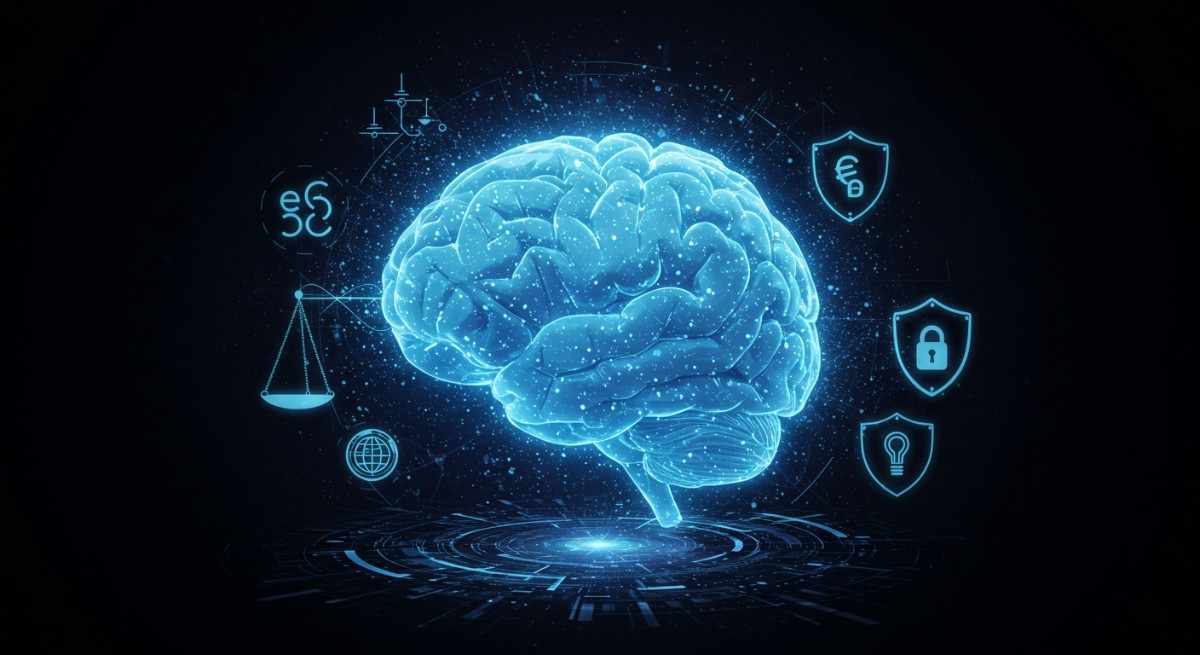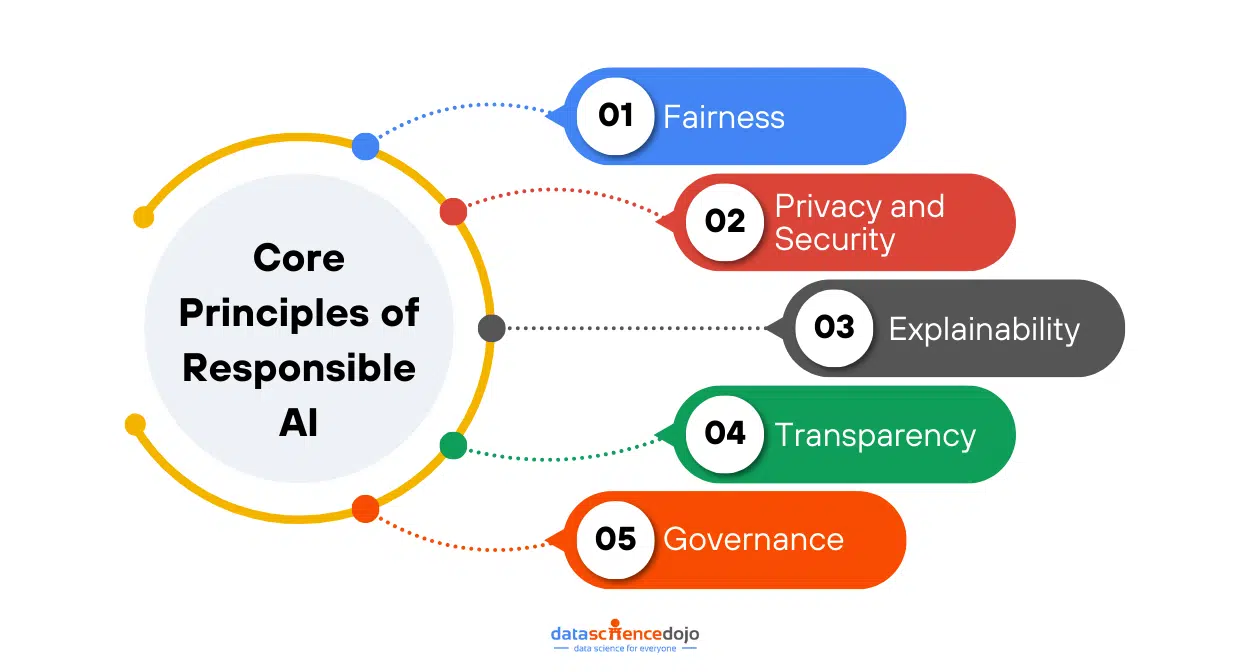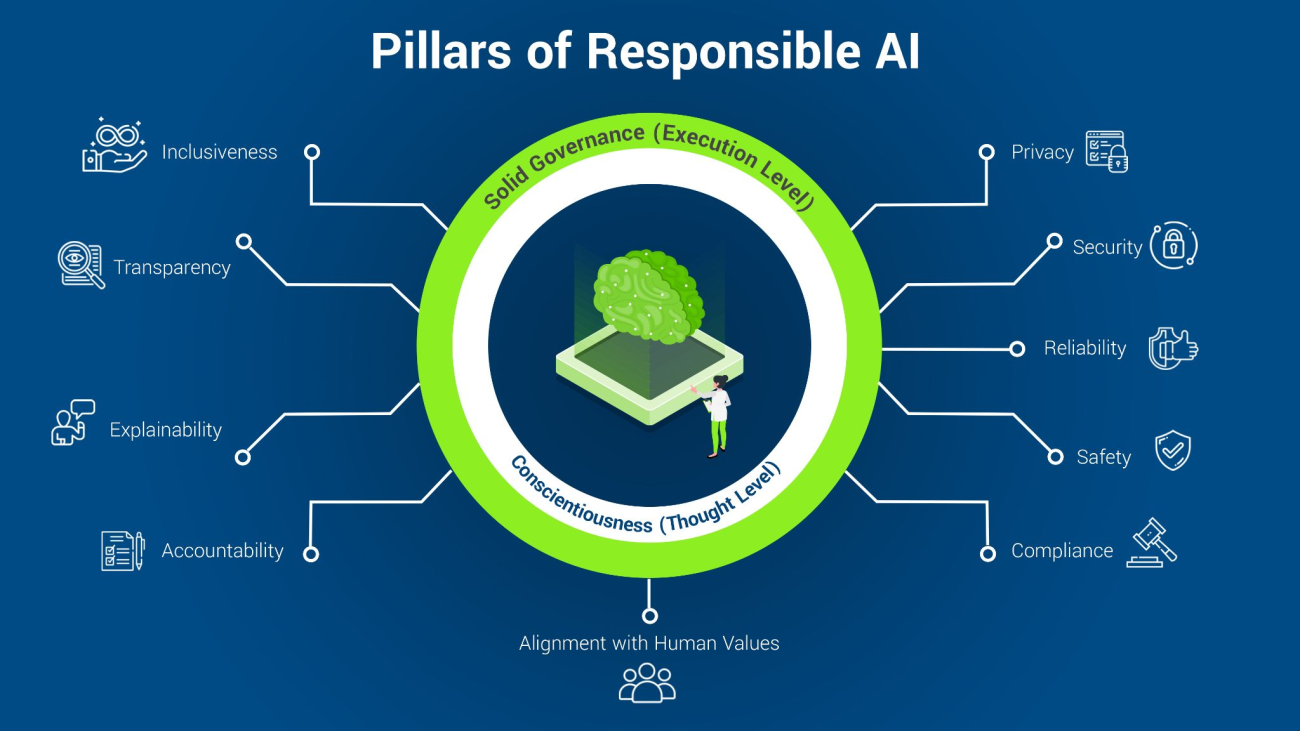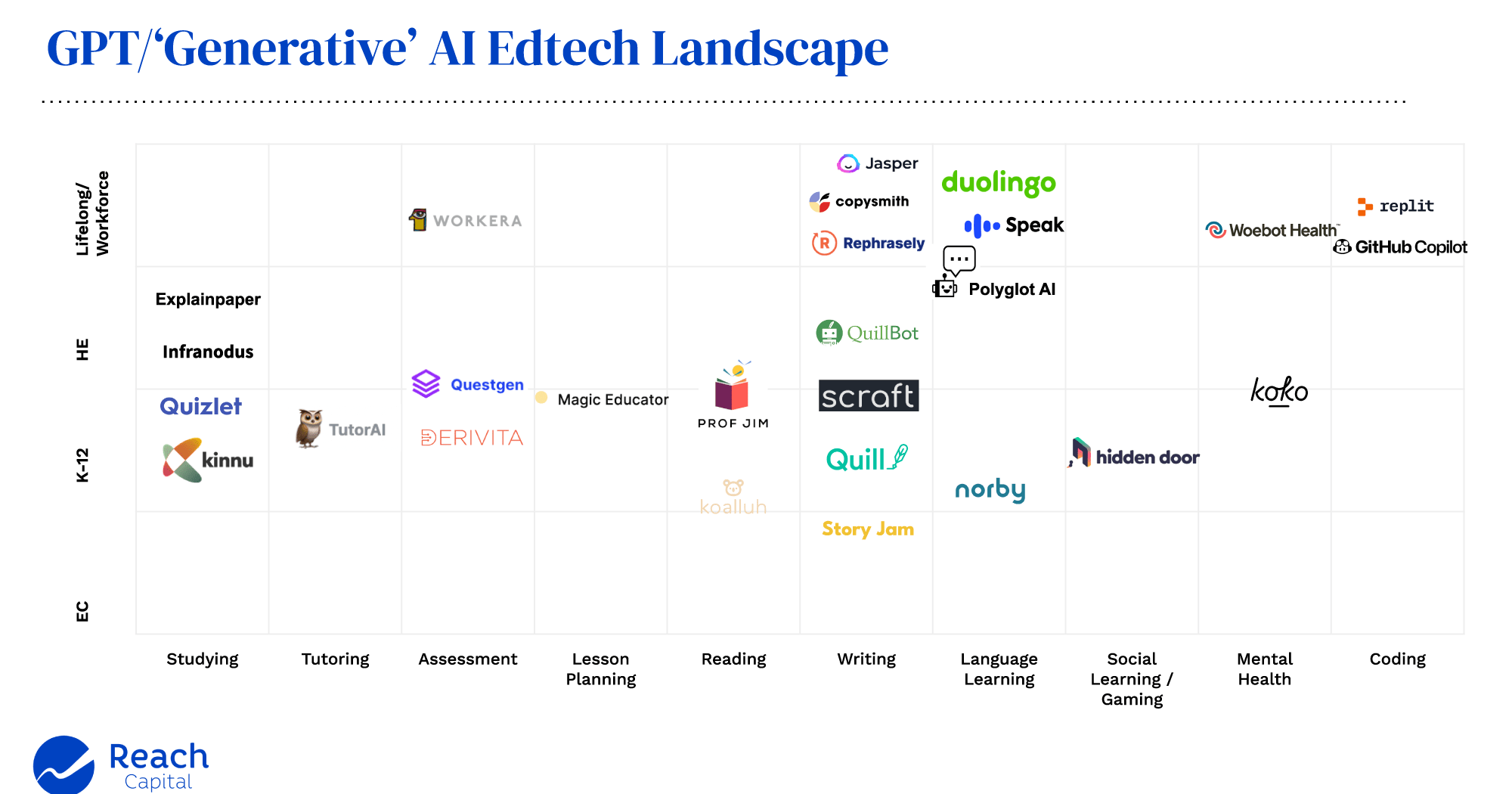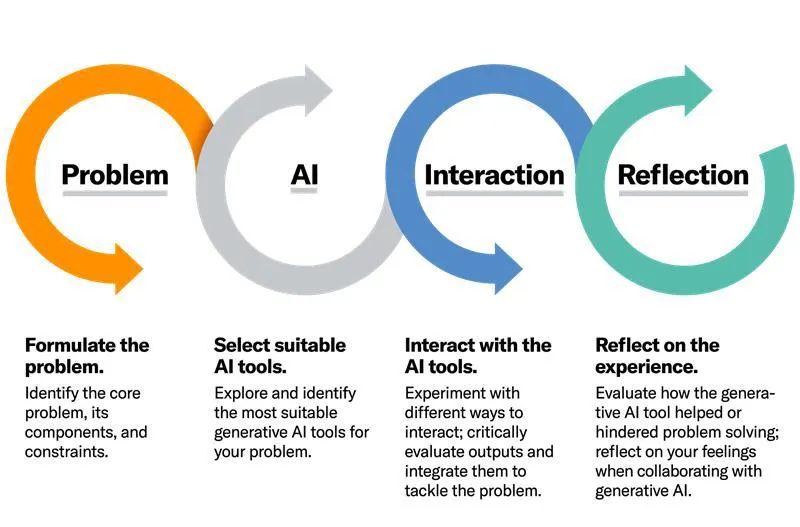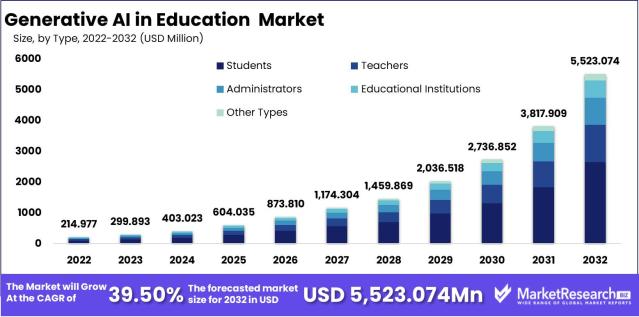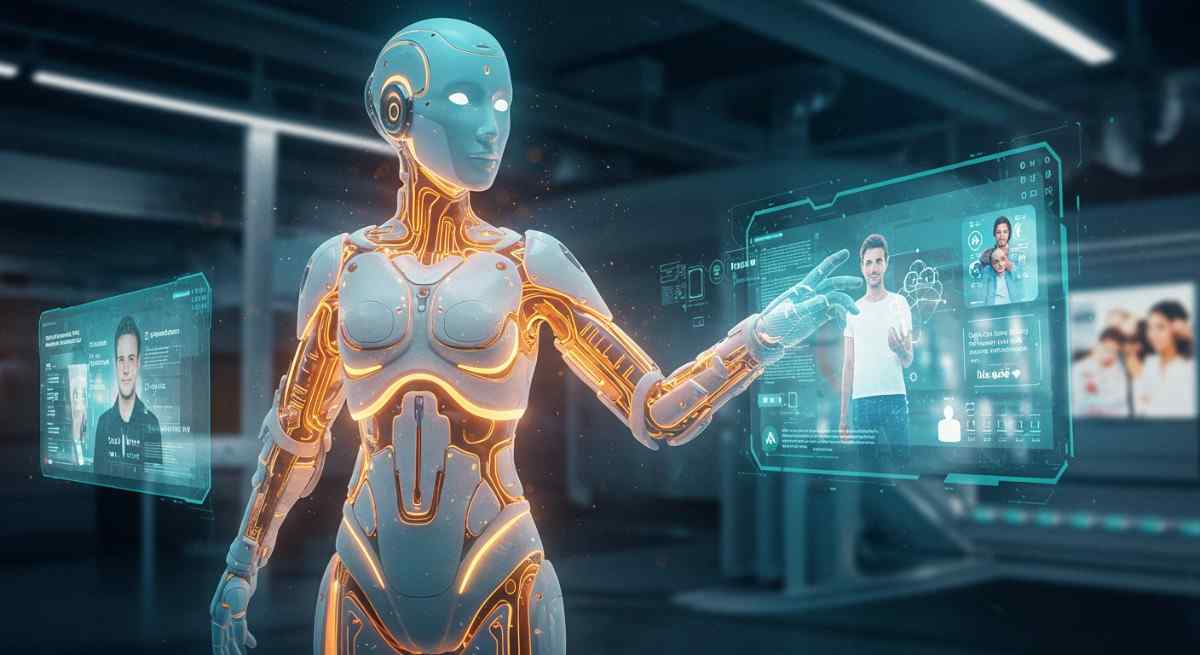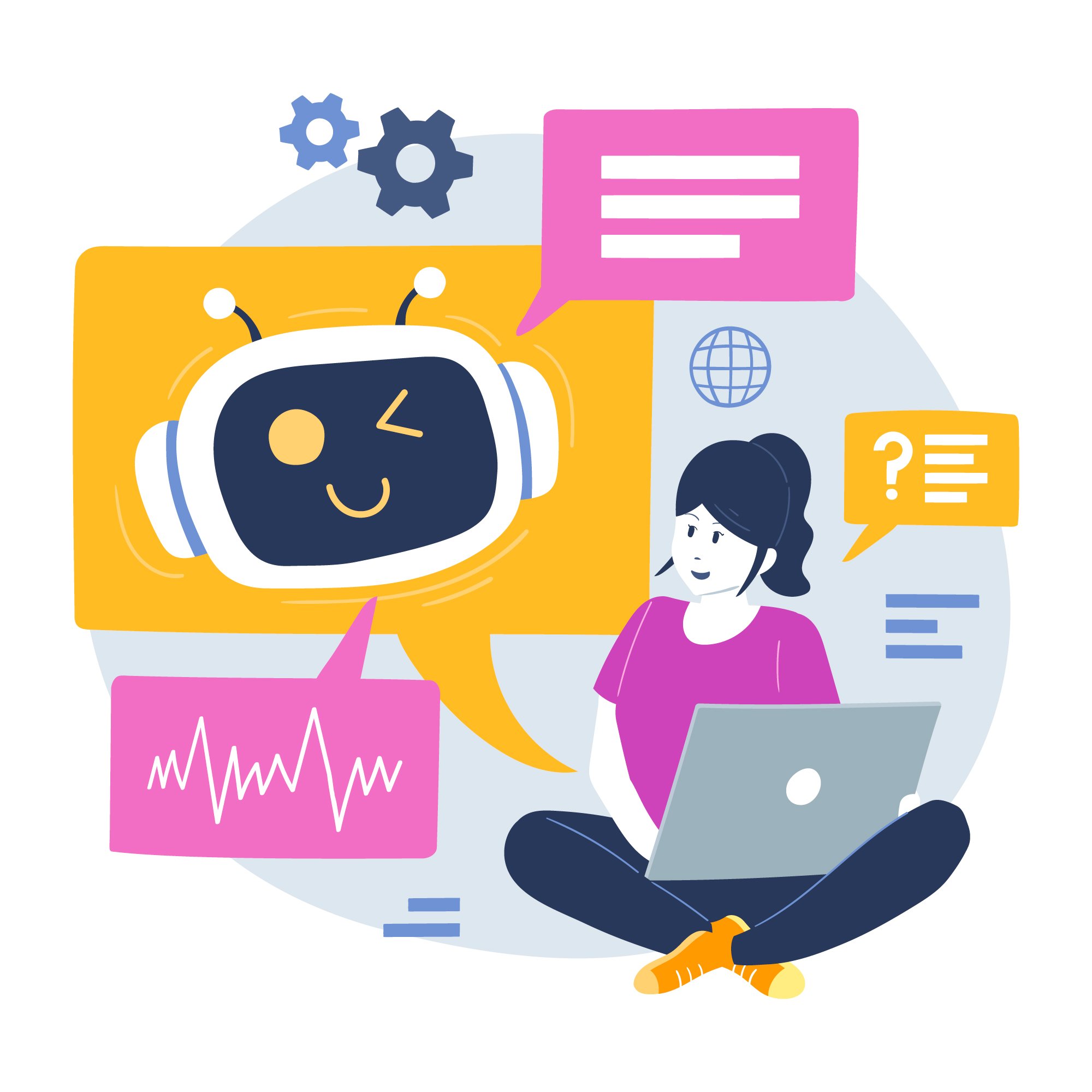Podcasting has become a popular medium for sharing information, stories, and entertainment. However, creating a high-quality podcast involves several steps, from ideation to recording, editing, marketing, and more. AI tools can simplify many of these tasks, making podcasting more efficient and accessible.
The plethora of AI tools might be overwhelming to you. There’s now so much choice that someone might as well build an ‘AI podcast tools chooser” to help you pick.
However, since choosing an AI tool for podcasters remains a manual process, we have curated a list of the top 10 AI tools for podcasters to use in 2025:
Let’s look at the different aspects of each tool and how they work to enhance the process of creating podcasts.
1. ClickUp – Best for Podcast Management
ClickUp is a powerful productivity tool that serves as a comprehensive podcast management platform. It integrates with over 1000 tools, including recording software, hosting platforms, and social media accounts.
It offers features like instant messaging, AI writing tools, content calendar templates, and more, making it a one-stop solution for managing every aspect of your podcasting workflow. With templates for podcast planning, script writing, and episode tracking, ClickUp helps you stay organized and efficient from start to finish.

Key Features and Limitations
ClickUp offers a centralized podcast management platform, making it easier to create and manage your content. Its pre-built templates support a simplified podcast planning procedure.
Here are the 18 best Data Science Podcasts
The platform also includes ClickUp Brain, an AI-powered writing assistant for podcast scripting and description. The AI tool also consists of 1000+ integrations for recording software, hosting platforms, social media accounts, and cloud storage.
However, the tool is limited by its long learning curve. Moreover, access to ClickUp Brain is also restricted as it is only available in the paid plans.
Pricing
- Basic Free Version
- Unlimited: $7/month per user
- Business: $12/month per user
- Enterprise: Custom pricing
- ClickUp Brain: Add to any paid plan for $5 per Workspace member per month
2. Adobe Podcast – Best for Beginner-Friendly Editing
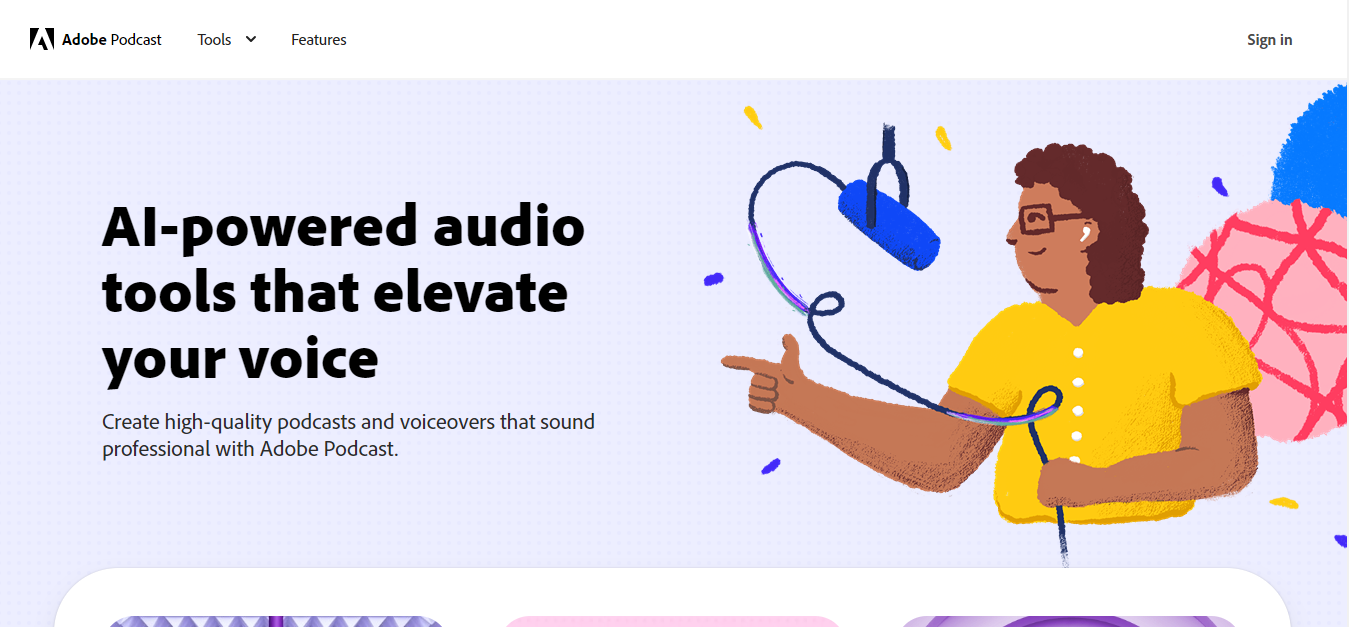
Adobe Podcast is a beginner-friendly platform that enhances your podcasts with a zero-learning curve. It enables effortless editing via transcripts, background noise removal, audio enhancement and offers an AI mic check to improve your mic setup.
This makes it ideal for podcasters who want to produce high-quality content without extensive technical knowledge.
Key Features and Limitations
There is an Adobe Podcast Studio (beta) version where you can record, edit, and enhance your podcasts. It includes background noise removal, AI mic check for optimal setup, and audio editing via transcript (available in Adobe Premiere Pro).
Meanwhile, the Adobe AI tool offers limited advanced editing features compared to other specialized audio editing tools. Plus, since it’s still in beta, some features may be unstable or under development.
Pricing:
- Free (beta)
- Adobe Creative Cloud ($35.99/month)
3. Descript – Best for Audio Editing and Collaboration

Descript is an AI-powered platform that simplifies podcast editing through automatic transcription and text-based audio editing. Its features include Studio Sound for audio quality improvement, Overdub for creating voiceovers, and tools for removing filler words and mistakes.
Key Features and Limitations
Descript stands out with its features of text-based audio editing, filler word removal, and realistic voiceovers with Overdub. It also enables podcasters to do real-time collaborations when managing their content.
However, even its advanced/professional-level audio editing features might lack some support a podcaster might be looking for. Thus, its AI-based editing can not be entirely trusted.
Pricing:
- Basic free version
- Creator: $15/month per user
- Pro: $30/month per user
- Enterprise: Custom pricing
4. Alitu Showplanner – Best for Podcast Audio Planning and Pre-Production
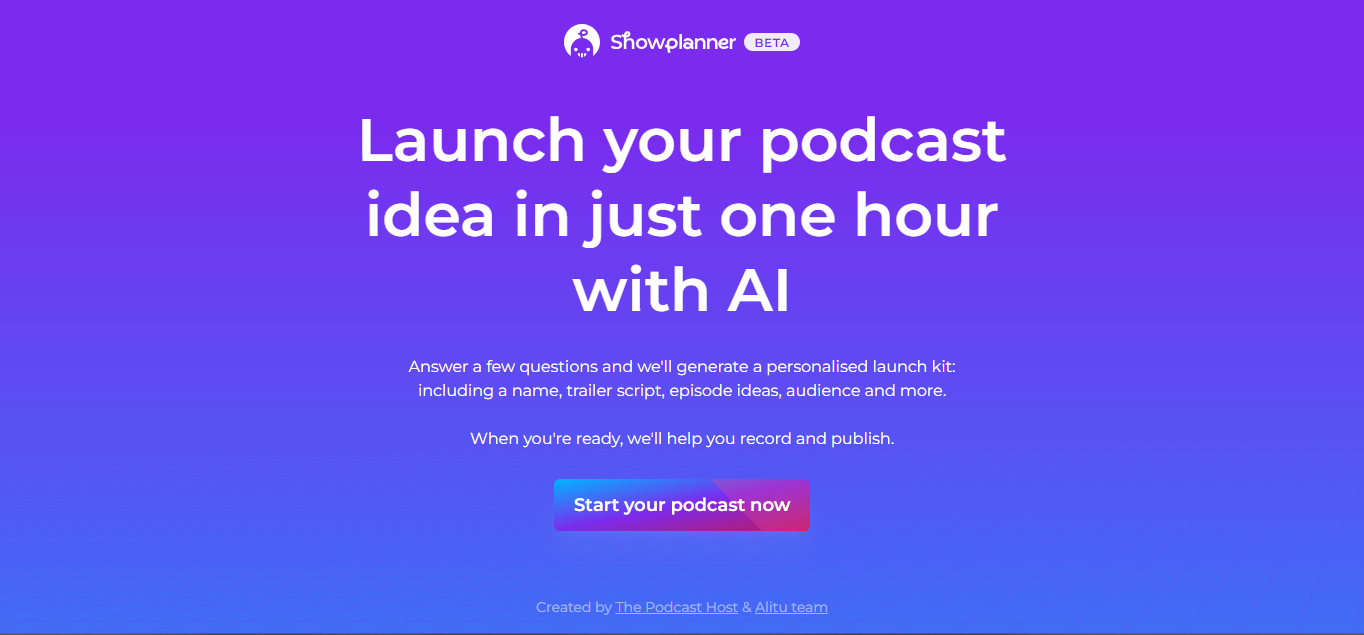
Alitu Showplanner is designed to simplify podcast planning and production. It helps podcasters generate episode ideas, organize content, and create thorough outlines. The tool also offers features for scheduling releases, organizing segments, and managing guest interviews, making it easier to produce professional-quality podcasts.
Key Features and Limitations
Its prominent features include a drag-and-drop interface for episode structuring, and notes, links, and timestamps for segments. It also allows podcasters to import audio clips directly into their show plan and export them as PDFs or text guides.
Also read: Must-Have AI Tools for Daily Use
Alongside these features, it provides challenges with its limited editing features for imported audio clips. The audio post-production is not comprehensive. Hence, the AI tool may feel less intuitive for non-linear podcast structures.
Pricing:
- Indie podcasters: $38/month per user (add-on pricing for hosting services)
- Business: Starts at $195/month per user
5. RSS.com – Best for Podcast Hosting and Automatic Transcriptions
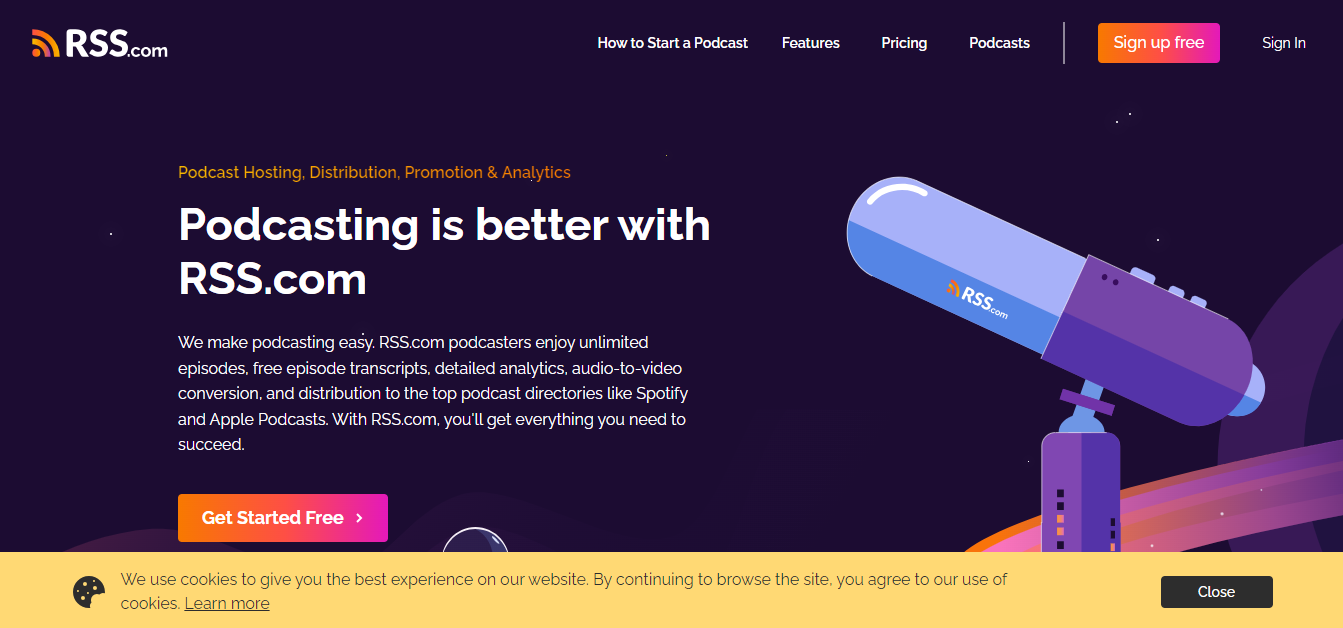
RSS.com is a great podcast hosting platform that offers podcasters free transcripts, detailed analytics, audio-to-video conversion, and distribution to top directories like Spotify and Apple Podcasts. It also automatically transcribes all of your episodes using AI-powered technology.
By providing transcripts, it enhances accessibility, boosts search engine visibility, and allows you to repurpose content into blog posts and social media shares.
Key Features and Limitations
It is an efficient podcast hosting and distribution tool. Its key features include automatic episode transcription, enhanced accessibility, and SEO. Moreover, you can also repurpose your podcast content for blogs and social media platforms.
Some challenges associated with RSS.com include limited customization options for transcription editing. Moreover, it requires users to purchase a subscription for advanced features and unlimited hosting.
Pricing:
- Free first month of hosting with coupon code FREEMONTH
- $11.99/month
6. ChatGPT – Best for Brainstorming and Outlining
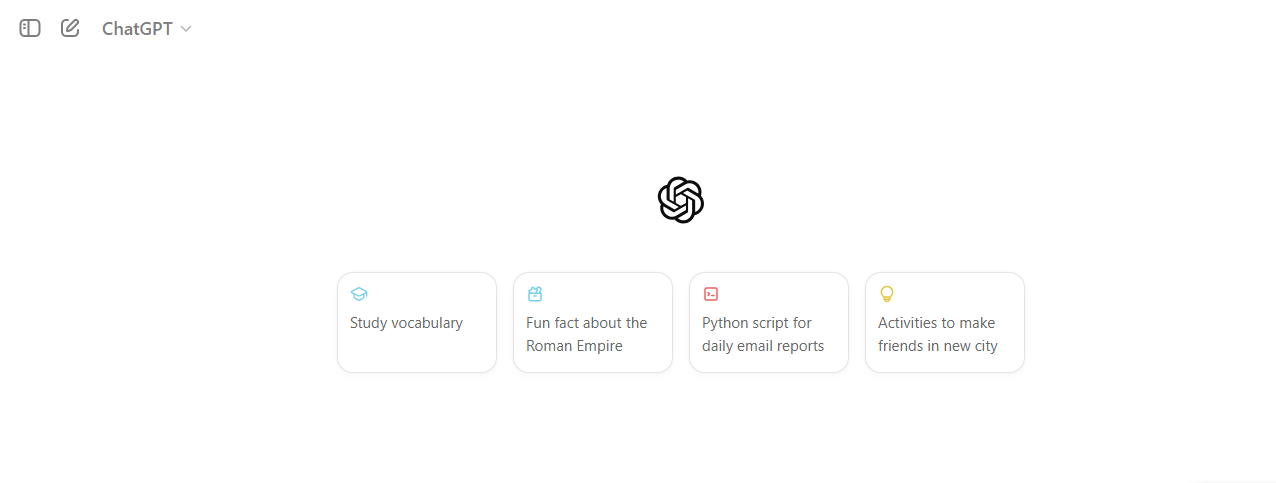
ChatGPT, developed by OpenAI, is an AI chatbot ideal for generating podcast ideas and structuring episodes. It can help you brainstorm episode topics, create detailed outlines, and even generate compelling dialogue.
Its intuitive interface makes it a great virtual collaborator, providing real-time feedback and suggestions to enhance your podcast’s quality.
Key Features and Limitations
It is an ideal tool for idea generation and brainstorming. You can use ChatGPT to create detailed episode outlines, refine your script, and generate social media captions and blog post structures linked to your podcast.
You might also find this useful: Dynamic Few-Shot Prompting for Creating Content
However, you must carefully analyze the generated content for accuracy and tweak it a little to sound less robotic. A major challenge also includes the inability to research current events as training data is only updated till April 2023.
Pricing:
- Free
- Plus: $20/month per user
- Team: $30/month per user
- Enterprise: Custom pricing
7. Jasper – Best for Content Creation

Jasper is an AI-powered writing assistant that helps podcasters create engaging episode descriptions, show notes, social media posts, and more. It uses AI algorithms to generate content based on audience preferences and existing materials, making it easier to brainstorm, script, and promote your podcast.
Key Features and Limitations
The AI tool is useful for episode topic brainstorming, script writing assistance, show notes and descriptions, and social media post generation.
Give it a read too: Top 9 Content Generators
However, the generated output requires careful editing and proofreading as AI-generated text can contain errors or inaccuracies. It also requires very specific prompts for the best results.
Pricing:
- Free: Trial for seven days
- Creator: $34/month per user
- Pro: $59/month per user
- Business: Custom pricing
8. ContentShake AI – Best for SEO Optimization and Summarization
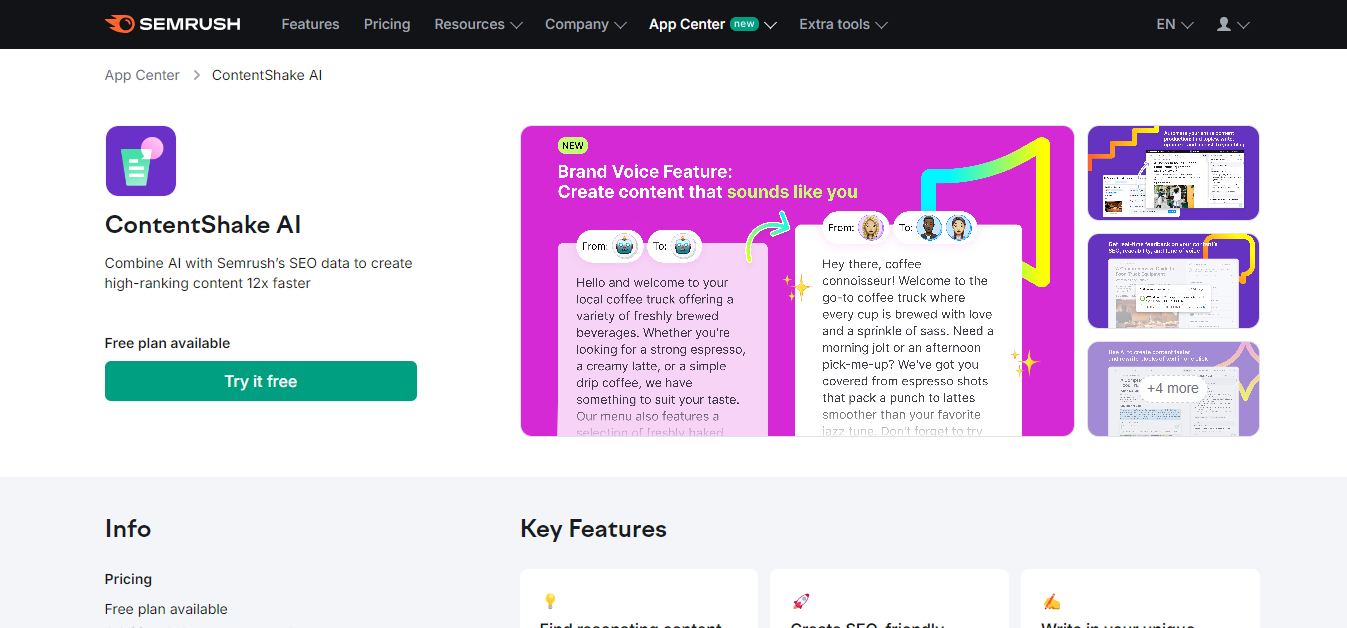
ContentShake AI by Semrush excels in analyzing data to generate episode ideas and optimize content for SEO. It helps podcasters stay ahead by revealing competitor strategies and audience preferences. The tool can generate SEO-optimized titles, descriptions, and detailed show notes, improving accessibility and listener discovery.
Key Features and Limitations
Using ContentShake AI, you can create SEO-optimized content, show notes, and summaries. It can also assist you in creating effective social media posts for your podcast and repurposing a highly SEO-optimized blog.
Also learn how AI is helping content creators
However, the tool is less effective for highly conversational shows which can lead to inaccurate summaries and negatively impact the SEO optimization of the content.
Pricing:
- Free: Trial (for seven days)
- Premium: $60/month per user
9. Suno AI – Best for Custom Podcast Music Generation

While podcast music isn’t necessary, it has its own benefits. It can add a layer of professionalism and help you create a unique brand identity, making your show instantly recognizable to listeners. There are many ways to find and purchase podcast music, including the AI route.
Suno is an AI tool for creating personalized music for your podcast. It allows you to compose original intro and outro themes, generate background music tailored to different podcast segments, and avoid copyright issues with royalty-free music.
Key Features and Limitations
Suno AI is a useful tool to generate custom intro and outro themes, and create relevant and customized background music. The plus point is that it will be royalty-free music, making you free of copyright concerns.
Its major limitation is that AI-generated music can lack the nuance and complexity of human-brain creativity. It also offers restricted control over intricate musical elements or complex arrangements.
Pricing:
- Basic: Free
- Pro: $10/month per user
- Premier: $30/month per user
10. Wondercraft – Best for Post-Production and Audio Shareability

Wondercraft uses advanced AI to turn text into high-quality audio productions. It supports multiple languages and offers features like automatic audio editing, voice cloning, and customizable soundtracks. This tool helps podcasters create engaging episodes quickly and efficiently.
Key Features and Limitations
Its prominent features include AI-generated voices for intros and outros, audio transcription for better discoverability, text-to-speech features for content creation, and shareable soundbites for social media.
A major challenge is that background noise or multiple speakers can lead to inaccurate transcription.
Pricing:
- Free
- Creator: $34/month per user for 60 credits a month
- Pro: Starts at $64/month per user for 150 credits a month
- Custom plan: Custom pricing
This concludes our list of top 10 AI tools for podcasters, highlighting each one’s specialty. You can explore these tools further and revisit your requirements in detail before choosing the most suitable tool for your podcast.
To Sum it Up
These AI tools can significantly enhance your podcasting workflow, making it more efficient and allowing you to focus on creating high-quality content. Whether you’re just starting or looking to take your podcast to the next level, these tools offer a range of features to meet your needs. Explore them and find the right mix that works best for you!





